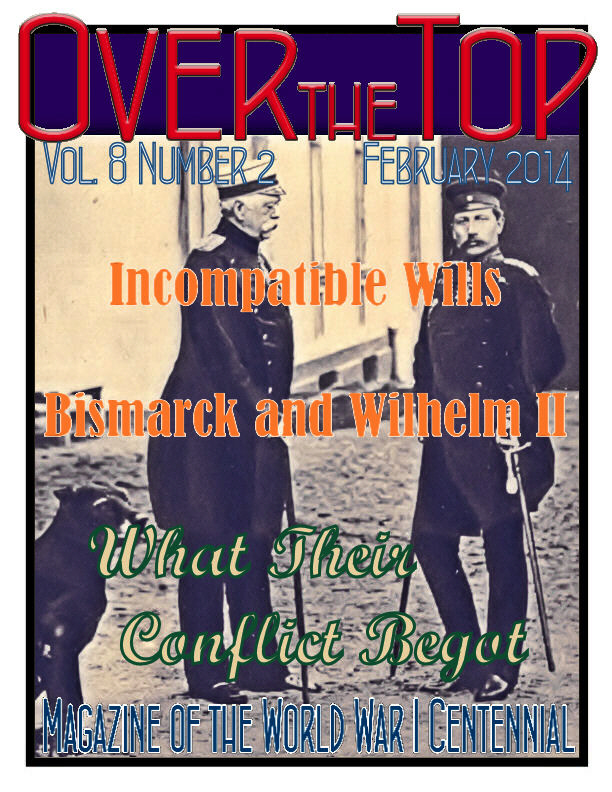
February 2014 |
 |
|


What Did Your Town Do During the War?
The Great War touched every community in America. Every city, town, and village provided warriors and volunteers for the expeditionary forces. Many of those sons and daughters never returned. War industries expanded everywhere. New people arrived and shook things up. Local booster groups were energized and sometimes — in their own way — went "over the top." Not all of the wartime experience is fondly remembered today — it could include crime, riot or disease. Nevertheless, that story is part of your community's life today and part of America's heritage. If you are willing to research and write your town's World War I story, or know someone who is, please let me know. I'll publish everything I can and do everything I can to make sure the story of your community is not forgotten. Email the Editor
MH

|
2014
 West Point Announces First World War Conference: "Literature, Memory, and the First World War;" 11-14 September 2014 Details, Registration, and Call for Papers. West Point Announces First World War Conference: "Literature, Memory, and the First World War;" 11-14 September 2014 Details, Registration, and Call for Papers.
 New York State Military Museum, "Fiery Trial and Sacrifice - New York and the First World War," ongoing exhibit, Saratoga Springs, NY. Virtual Tour. New York State Military Museum, "Fiery Trial and Sacrifice - New York and the First World War," ongoing exhibit, Saratoga Springs, NY. Virtual Tour.
 The National World War I Museum in Kansas City, MO, has a current exhibit running on "The Road to War," running through April 2014. Website. The National World War I Museum in Kansas City, MO, has a current exhibit running on "The Road to War," running through April 2014. Website.
 The MacArthur Memorial and Museum in Norfolk, VA, has a current exhibit running on "The 42nd 'Rainbow' Division in World War One," running through September 2014. Website. The MacArthur Memorial and Museum in Norfolk, VA, has a current exhibit running on "The 42nd 'Rainbow' Division in World War One," running through September 2014. Website.
 The U.S. Air Force National Museum at Wright-Patterson AFB, OH, and the League of WWI Aviation Historians (OvertheFront.com), are collaborating on what will be the first U.S.-based mega-event for the WWI centennial. The League is scheduling its 2014 seminar to correspond with the WWI Dawn Patrol Fly-In at the Museum in Dayton, OH, 24-28 September 2014. Mark it down on your calendar. The U.S. Air Force National Museum at Wright-Patterson AFB, OH, and the League of WWI Aviation Historians (OvertheFront.com), are collaborating on what will be the first U.S.-based mega-event for the WWI centennial. The League is scheduling its 2014 seminar to correspond with the WWI Dawn Patrol Fly-In at the Museum in Dayton, OH, 24-28 September 2014. Mark it down on your calendar.

The Mobilization Order
A bailiff looking like a funeral parlour organizer, who, in order to spare the family, said to us, "Gentlemen, go to the Post Office in the Rue Rabelais ... Go quickly, you'll be the first." The first, but what for?
The first to read the piece of blue paper, like an ordinary telegram, bearing the handwritten decree ordering general mobilization which a young post office worker was sticking up above the printed matter box. We were joined by passersby and we formed a group which grew by the minute. "Read it out!" somebody cried. There was not much to read, but the text was clear enough. One of us read out the short but forbidding pronouncement. All around us there was an indefinable kind of hush. Then the shout went up, "Long live France!"
André Salmon, Endless Memories, 1956
|
|
U.S. War Poster
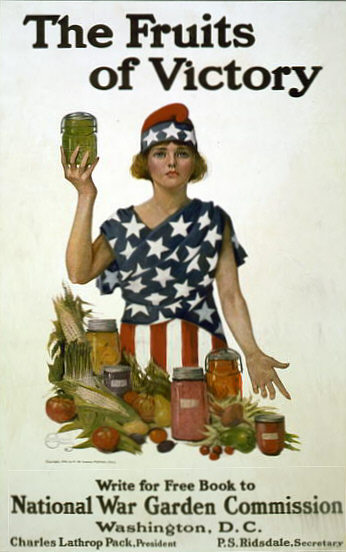
By Leonebel Jacobs, 1918

19th-Century Events
Some events during the 19th century are critical for understanding how war broke out in 1914.
 The European Revolutions of 1848-1849
The European Revolutions of 1848-1849
 The Unification of Italy
The Unification of Italy
 Prussian-Austrian War of 1866
Prussian-Austrian War of 1866
 Biography of Napoleon III
Biography of Napoleon III
 The Ottoman Empire Before the First World War
The Ottoman Empire Before the First World War
 The Great Demographic Transition
The Great Demographic Transition
 Hiram Maxim and His Machine Gun
Hiram Maxim and His Machine Gun
 Man of the Century? Otto von Bismarck
Man of the Century? Otto von Bismarck
Seeger in Paris

You may have seen in the recent obituaries for folk singer Pete Seeger that he was the nephew of the American poet and French Legionnaire Alan Seeger. Alan's most famous work is of course Rendezvous. He is well remembered in France. In Paris, his figure tops the Memorial to American Volunteers at the Place des États-Unis in the 16th arrondissement. He is also remembered at Belloy-en-Santerre, the village where he met his rendezvous with death on 4 July 1916. Contributing Editor David Beer wrote a feature on Seeger in our blog Roads to the Great War last year that you might enjoy: (link)

OMG (Oh, My God) and World War I
The earliest use in correspondence of the abbreviation "OMG" to represent "Oh, my God" so far discovered is in a 9 September 1917 note from Admiral Jackie Fisher to the Right Honorable Winston Churchill. Fisher was displaying sarcasm over the Royal Navy's inability to mount an amphibious operation matching the German well-executed landing in the Baltic (Operation Albion). Fisher thought a new order of Knighthood, the OMG should be showered on the admirals to stimulate them.
|

|

U.S. Centennial Organizations & Resources
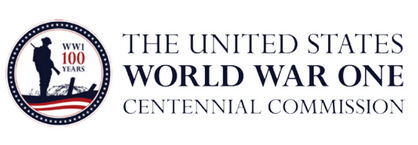
worldwar-1centennial.org/
|
Essential Reading

Click on Image to Access Article
British author Nick Lloyd (Hundred Days: The Campaign That Ended World War I) contributed a tremendous and refreshing bit of commentary in the 24 January edition of the Wall Street Journal. Please read it if you can. He raises some excellent points, such as:
What Europe's World War I [centenary] commemorations are likely to have in common is one thing: The role of the U.S. will probably be ignored or played down.
World War I marked a hinge in modern history: The moment the U.S. emerged as a global power and changed the meaning and direction of the 20th century.
The speed and strength of the U.S. war effort wasn't a surprise only to the Kaiser; it was one of the great strategic surprises of the 20th century.
German commanders looked on with horror: The Americans, they realized, would only grow stronger over the coming months. This helped to convince Germany to give in.
The Lessons of Liberty
Send This to Every School Board, Teacher, and Home Schooler You Know!!
The National World War I Museum has developed fabulous teacher's guides to help teach both the story and relevance of the First World War and the importance of such values as sacrifice, courage, honor, and (don't faint now) patriotism.
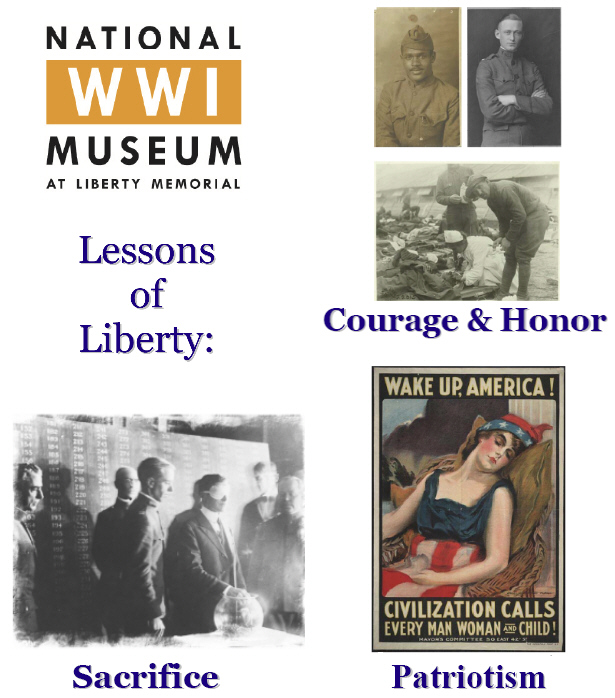
These lesson plans and tons of backup material, photos, posters, and documents from the war can be downloaded by educators only at the museum website. It's a very simple process and well worth the effort. Please tell your local educators about this great resource: http://theworldwar.org/learn/educators-students/lessons-liberty
Relaunching Scuttlebutt and Small Chow for the Centennial
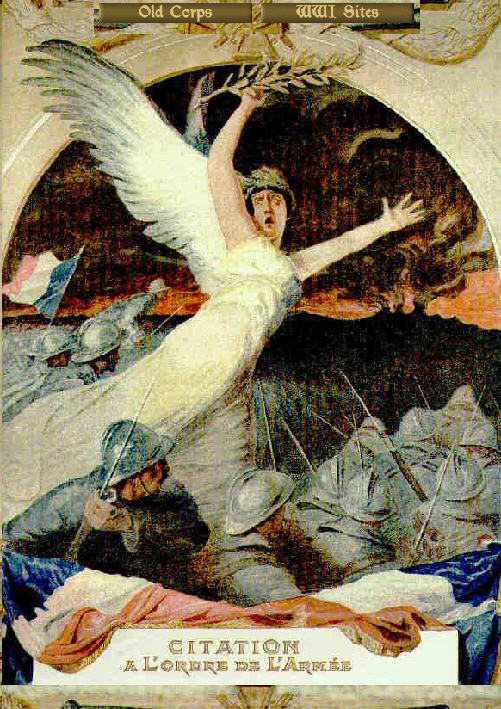
Background Image at Scuttlebutt and Small Chow |
Some of our old friends are also reshaping their websites for the Centennial. Over the years, Scuttlebutt and Old Chow has been one of my favorites. It's always surprising, eclectic, highly informative, and it is especially strong on literary matters and the U.S. Marine Corps. Here's an in invitation from Operator/Editor B.J. Omanson:
Greetings all,
You are cordially invited to an old WWI website hub newly fitted out for the Centennial. Additions include a clickable scrolling marquee of Great War icons, a slow-flying promenade of WWI aircraft, & a continuous tickertape-style Great War chronology (cultural as well as military), updated daily.
Probably best viewed on vintage PC at:
http://www.scuttlebuttsmallchow.com/greatwarwebsites.html

Part of My Never-Ending WWI Aircraft Promenade
B.J. Omanson
Coming Soon: Another Relaunch for the Centennial

Fully Accessible During Redesign at:
http://www.worldwar1.com/dbc/
|
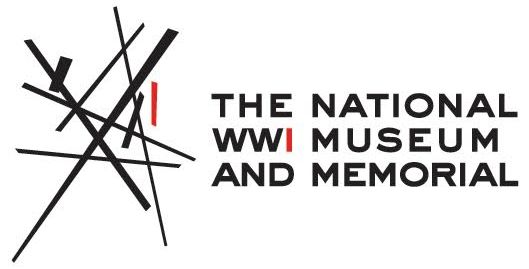
theworldwar.org/
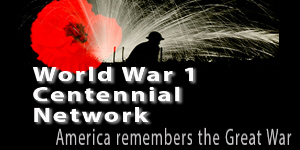
www.ww1-centennial.org/

history.army.mil/
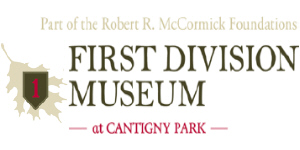
www.firstdivisionmuseum.org/

www.abmc.gov/
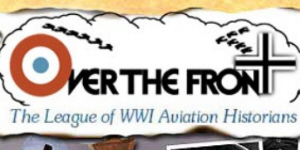
www.overthefront.com/

www.nationalmuseum.af.mil/
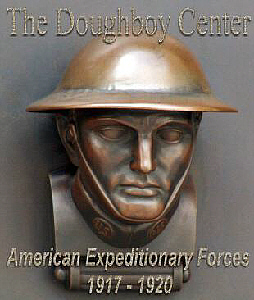
www.worldwar1.com/dbc/
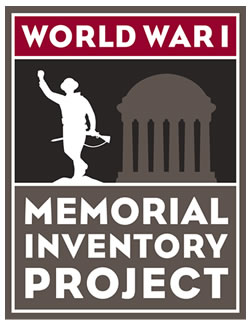
wwi-inventory.org/

wisconsinhistory.org/

www.uswarmemorials.org/
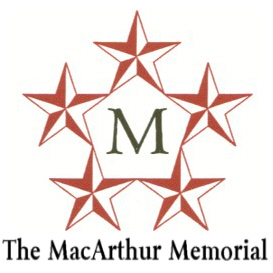
www.macarthurmemorial.org/
|
|

February 1914
The Durnovo Memorandum
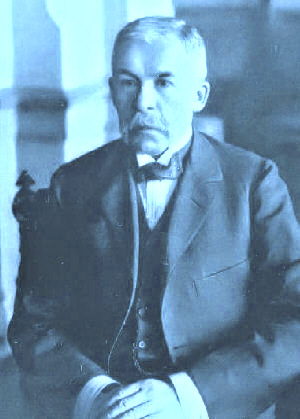
Pyotr N.
Durnovo
|
This month is the 100th anniversary of the submission of what is possibly the most prescient political analysis in history. It was penned by Pyotr N.
Durnovo, a member of the State Council and former
Minister of the Interior in Witte's cabinet, and
presented to the Tsar on 14 February 1914. A conservative monarchist and Russian nationalist, Durnovo thought war between Germany and Great Britain was certain, and he emphasized that it was not in
Russia's interest to fight in such a costly and uncertain war
against its fellow monarchy, Germany. He thought the outcome of such a war would only further British interests and that rapprochement with Germany was a more prudent course. The specificity of his forecasting is remarkable. Here are some of his most significant "hits":
 The fundamental
groupings in a future war are self-evident: Russia,
France, and England, on the one side, with Germany,
Austria, and Turkey, on the other. . . [Romania] will remain
neutral until the scales of fortune favor one or another
side.
The fundamental
groupings in a future war are self-evident: Russia,
France, and England, on the one side, with Germany,
Austria, and Turkey, on the other. . . [Romania] will remain
neutral until the scales of fortune favor one or another
side.
 Indeed, it is possible that America or Japan may join
the anti-German side. [Both did, of course.]
Indeed, it is possible that America or Japan may join
the anti-German side. [Both did, of course.]
 We must note, first of all, the insufficiency
of our [Russia's] war supplies.
We must note, first of all, the insufficiency
of our [Russia's] war supplies.
 But in the event of
defeat, the possibility of which in a struggle with a foe
like Germany cannot be overlooked, social revolution
in its most extreme form is inevitable. . . the trouble will start with
the blaming of the Government for all disasters. In the
legislative institutions a bitter campaign against the
Government will begin, followed by revolutionary
agitations throughout the country, with Socialist
slogans, capable of arousing and rallying the masses,
beginning with the division of the land and succeeded
by a division of all valuables and property. The
defeated army, having lost its most dependable men,
and carried away by the tide of primitive peasant
desire for land, will find itself too demoralized to
serve as a bulwark of law and order.
But in the event of
defeat, the possibility of which in a struggle with a foe
like Germany cannot be overlooked, social revolution
in its most extreme form is inevitable. . . the trouble will start with
the blaming of the Government for all disasters. In the
legislative institutions a bitter campaign against the
Government will begin, followed by revolutionary
agitations throughout the country, with Socialist
slogans, capable of arousing and rallying the masses,
beginning with the division of the land and succeeded
by a division of all valuables and property. The
defeated army, having lost its most dependable men,
and carried away by the tide of primitive peasant
desire for land, will find itself too demoralized to
serve as a bulwark of law and order.
 Germany, likewise, is destined to suffer, in
case of defeat, no lesser social upheavals. The effect
of a disastrous war upon the population will be too
severe not to bring to the surface destructive
tendencies, now deeply hidden.
Germany, likewise, is destined to suffer, in
case of defeat, no lesser social upheavals. The effect
of a disastrous war upon the population will be too
severe not to bring to the surface destructive
tendencies, now deeply hidden.
Apparently, however, the memorandum had no impact on the decision making of the Tsar and his advisors six months later during the July Crisis. Durnovo died in 1915 before most of his predictions were validated.
|
|

Flyers and application form for 2014 "Opening Moves" and
"Miracle of the Marne" Trips Now Available
(download pdf file here)

Click on Image to Send Email
|
|
|

|

Zane Grey
(1872-1939)
Western Writer
|
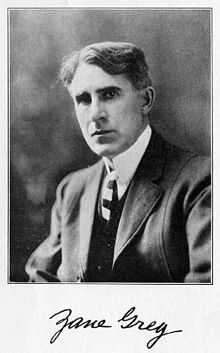
| |
(Pearl) Zane Grey was one of the first millionaire authors and with Jack London was one of the two most famous writers in America when the Great War broke out. After starting out as a dentist, he had seen an opportunity for a popular series of Westerns after reading Owen Wister's classic The Virginian. His breakthrough work was the 1912 Riders of the Purple Sage. Over his career, Grey became a major force in shaping the myths of the Old West and inspired the growth of what has become a huge literary genre. He also wrote about hunting, fishing, travel, and baseball, while also authoring six children's books. He had a dramatic response to the war, finding it repugnant, especially after the United States declared war.
Grey had suffered from extreme melancholia at times, and America's entry into the war in April 1917 set off a new and serious bout for him. He found himself repelled by its venality and fevered jingoism. He thought the young men who rushed off to the war were foolish and he suffered vivid images of destruction and death that set off what he and his circle recognized as a breakdown. He later described it as a "hopeless, morbid, sickening, exaggerated mental disorder."
Always an enthusiastic traveler, he was encouraged to join a group rail expedition around the States organized by his wife in the summer of 1917. It was during this trip that he had the idea of linking his reservations about the war and conditions in the U.S. to his fictional writing. This led eventually to one of his lesser-known works, The Desert of Wheat (currently published as War Comes to the Big Bend), in which the villains of the piece are "Wobblies" of the International Workers of the World, who are sabotaging the wheat harvest.
According to Grey's biographer Thomas Pauly, the I.W.W. was just an excuse to for Grey's "anguished obsession with the war." The novel's plot involves a penetration of the union by German agents, playing on a latent disloyalty of the many immigrants who avail themselves of American opportunity but secretly hate the American government and people. The ranchers in the story eventually triumph over the subversives, but the novel was just the first of a series set in Grey's contemporary time that assessed the war's damage to the nation. Other works, for example, included veterans from the fighting who were disabled physically and psychologically. Two titles from this period are suggestive of Grey's pessimism: The Vanishing American and The Day of the Beast. Grey's self-administered form of therapy was frequent fishing, which gave him a break from his war-related writing. But, apparently, when he returned to writing, his gloominess also came back. He even wrote of his theory that the war was damaging the nation's fisheries.
When the war ended Grey returned to writing about the Old West, his true love. His emotional depression subsided and he came back to be the nation's most successful writer in the postwar period. His popularity declined somewhat during the Depression. Gray died in 1939. Nevertheless another war would return him to prominence. The U.S. Government reissued many of his titles as inexpensive paperbacks to be carried in the hip pockets of GI's, who loved his work. Dwight Eisenhower always called Zane Grey his favorite author.
Joseph Conrad
(1857-1924)
Author
English author Joseph Conrad was born in Poland as Józef Konrad Korzeniowski. He began his career by spending 20 years at sea, during which he became a British subject. When the First World War began, he was fifty-six years old and had already written many of his greatest works. However, it had taken nearly two decades as a writer to gain some level of financial comfort. In August 1914 he was on his first extended vacation in 20 years and found himself in Cracow, Poland, then under the control of enemy power, Austria-Hungary. He eventually made his way home to Kent in England in November.
The following spring his son Borys volunteered for service and became an officer in the British Army. Borys would survive the war, although he was gassed and suffered shell-shock.
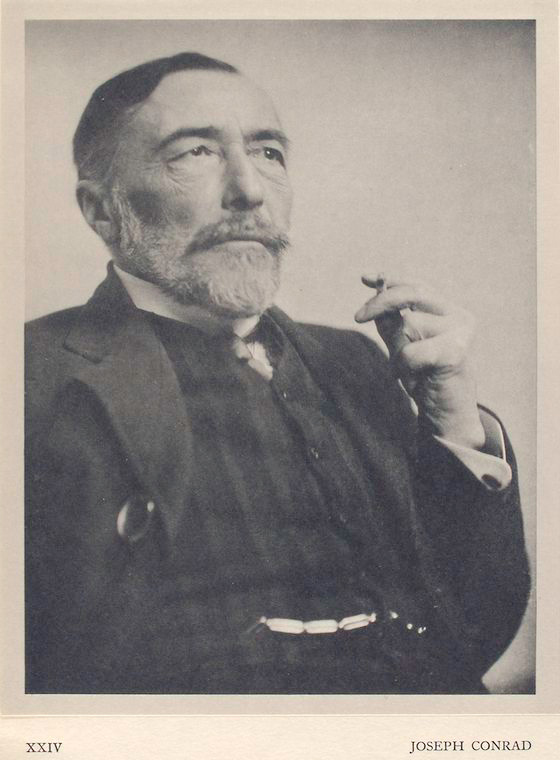
Joseph Conrad
|
In 1990 critic Cedric Watts described how the war influenced Conrad's work in a variety of ways. "One way was retrospective: some of his earlier writings could now be seen as tellingly prophetic. Another way was that it strengthened his preoccupation with Poland, his native land. A third way was that Conrad wrote a variety of tributes to those servicemen who, in their various activities, bravely served the war. Probably the dominant effect was the acceleration of Conrad's evolution from the writer of searchingly skeptical texts to a writer who, at some cost to his best talents, chose to emphasize the morally affirmative and patriotically traditional. It is noteworthy, however, that in his sole work of fiction which dealt directly with the combatants (the 1916 short story entitled "The Tale"), he did endeavor to depict a situation fraught with moral ambiguity."
After the war, Conrad continued to write, although his postwar works are less remembered. He died of a heart attack in 1924. Borys would find himself in jail for a year in 1927 over the finances of his father's estate, but he later wrote a touching memoir about his father.
|
|

The Editors Recommend
World War I Music
Twentieth-century musicologist Glenn Watkins produced the most comprehensive study of the music of the Great War ever published with Proof Through the Night, published in 2002. It is still available and can now can be purchased for Kindle. The book's cover text shows the tremendous scope of Watkin's scholarship: carols floating across no-man's-land on Christmas Eve 1914; solemn choruses, marches, and popular songs responding to the call of propaganda ministries and war charities; opera, keyboard suites, ragtime, and concertos for the left hand [by war veteran Maurice Ravel]. . . From wartime scores by Debussy and Stravinsky to telling retrospective works by Berg, Ravel, and Britten; from "La Marseillaise" to "The Star-Spangled Banner," from "It's a Long Way to Tipperary" to "Over There," music [that] reflected society's profoundest doubts and aspirations. By turns it challenged or supported the legitimacy of war, chronicled misgivings in miniature and grandiose formats alike, and inevitably expressed its sorrow at the final price exacted by the Great War.
But the best way to enjoy the music of the Great War is, of course, to listen to it. Over the years we have tracked down a number of authentic recordings made during the war and are now making them available on a musical CD, playable on your computer or any device. These are recordings of recordings, so they are not 21st-century digital quality, but we assure you that each cut is easy listening and sounds absolutely authentic for the time. We are selling it for $24.95 each plus shipping and handling. Just click on the links below our cover image to see the full playlist and ordering information.
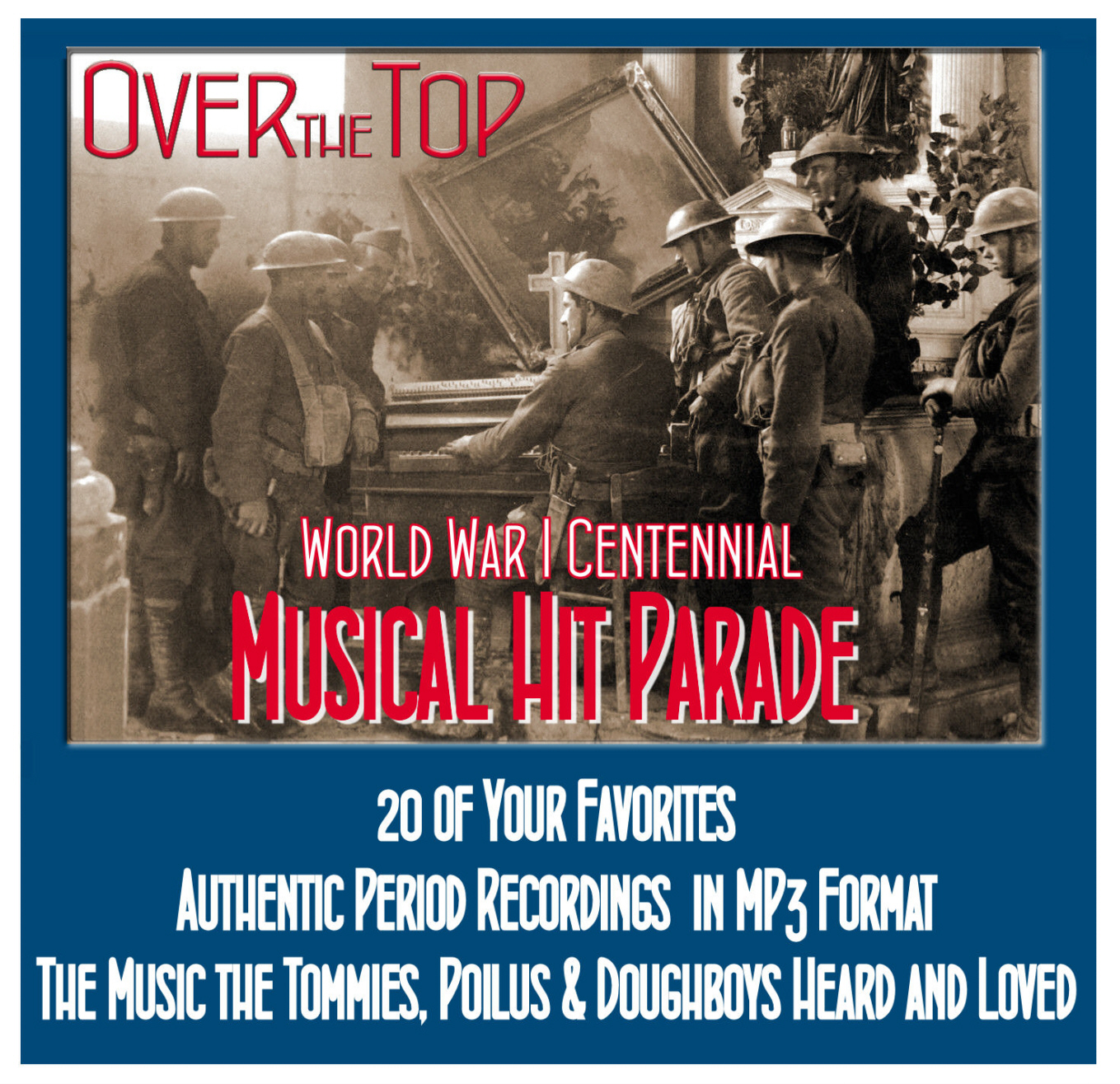
 Click Here for Playlist and Ordering Information
Click Here for Playlist and Ordering Information
|

The Bogus Photo of Gavrilo Princip's Arrest
|
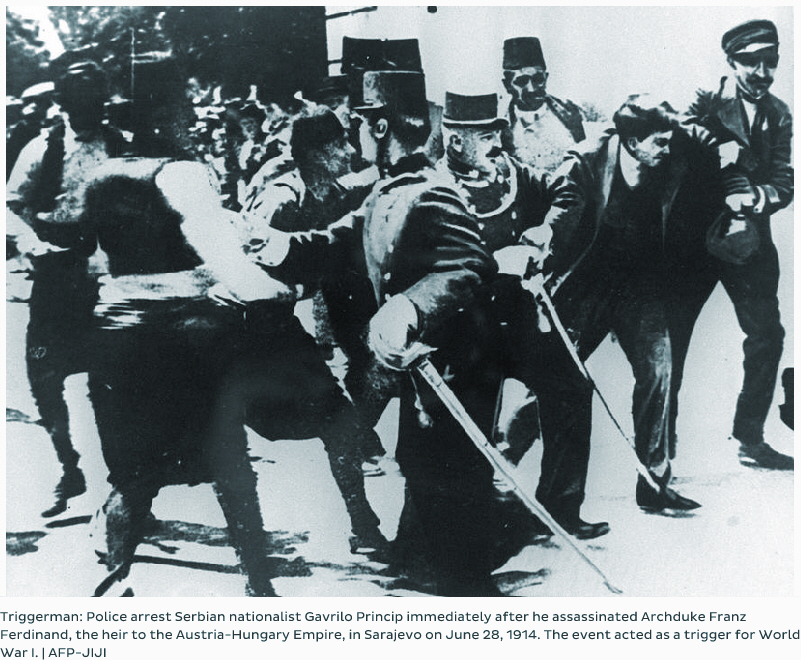
For a century the photo above has appeared in newspapers, books, and websites with a caption similar to the one shown. It purports to be a photo of assassin Gavrilo Princip under arrest after the murder of the Archduke Franz Ferdinand and his wife. It is not Princip, however. The individual shown in custody is his fellow assassin Nedeljko Cabrinovic, who had made an earlier unsuccessful attempt.
|
|
|

The U.S. Cavalry in Action
The 2nd Cavalry at St. Mihiel
[Ed. Note: The men of the four American cavalry regiments that were sent to France usually found themselves fragmented and set to duties given such prosaic tasks as directing road traffic, guarding prisoners, and carrying messages. Historian and Trip-Wire reader E.M. Coffman brought to my attention an account written by a cavalry troop commander(who would go on to greater fame as one of the "fightingest" generals of World War II, Captain Ernest Harmon), on his unit's (F Troop of the 2nd Cavalry) support of the St. Mihiel Offensive in September 1918.]
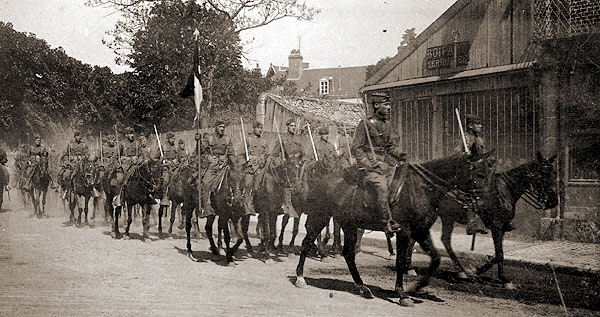
2nd Cavalry Just After Its Arrival in France
His commander's summary action report noted Harmon's mission and its results:
8. Troop F, sent north, surprised the enemy at Vieville and caused him to abandon a four-gun battery of heavy guns, and prevented him from burning part of the town. In St. Maurice it engaged a rear guard of mixed troops, mounted and dismounted. A number were killed and several prisoners were taken, including a Major with a very good horse. From St. Maurice patrols were pushed out to Hannonville, where liaison was established with the French troops, and to Woel where a force of the enemy was encountered without loss. From Woel patrols were sent forward to Doncourt and to within a kilometer of Jonville. As a result of the dayís work the Cavalry secured early news that the enemy had completely withdrawn from the St. Mihiel salient and that he was reforming on the line Champlon-St. Hilaire and Jonville.
In all about three hundred prisoners and three horses and a large amount of arms and ammunition captured. The enemy was either of poor quality or badly demoralized and surprised by the rapidity of the American advance. If a regiment of Cavalry well mounted and well trained had been sent through the line of the First Division about noon of the 12th, it is my opinion that a large number of prisoners would have been taken.
O. P. M. HAZZARD
Lt. Col., Cavalry.
Harmon's Account of the Mission:
Lieutenant Colonel Hazzard [on 13 September 1918] gave F Troop the following mission: To proceed north along the main line of railroad running from St. Mihiel toward Metz, to gain contact with the enemy; locate his new line of resistance and to procure, if possible, liaison with the French who were expected to come through from the west side of the Salient. . .

Capt. Harmon after the War
|
Flank patrols were sent out on both flanks, keeping abreast of the head of the column. The patrol on the right, due to the open country, kept well over from the road, that on the left kept at the foot of the ridge with scouts on the ridge. Realizing that much valuable information could be obtained by even a small unit as a troop and anxious to redeem our first brush with the enemy, the troop moved out at a brisk trot in the regular formation of point, advance party, and main body, in columns of troopers on either side of the road. The advance led through town already ablaze, left burning by the German retreat. To go through the towns keeping on the main road was a reckless proceeding, as a few machine guns well posted could do us great damage but to circle around would lose time and Captain Harmon, desiring to get back information quickly, took the chance and kept up a fast trot going north on the main road. The men were instructed that if in passing through the towns, machine gun fire was encountered, to leave the road from the right and left and get between the houses under cover. The first town passed through was Hattonville, about two kilometers north of Vigneulles. This town was deserted but was all afire, the flames scorching us as we passed through.
Our point was fired upon from a stable on the right near the outskirts of the village. From the fire it was very easy to see that not more than two or three Germans were located there. The advance was not halted but a squad turned out of the column, dismounted, and surrounded the barn, killed one German and took the other occupant prisoner. All along the road were wagons of loot and supplies left in the flight, the drivers evidently unhitching the horses and mounting them. The next town, Vieville, was in flames and apparently deserted. The troop kept up its advance, not stopping to search the town. The next town, Billy, six kilometers north of Vigneulles, was on fire and here we found a battery of Artillery being limbered up by about twenty of the enemy. They were taken by surprise and offered no resistance to being captured, in fact seemed greatly shaken in nerve. The prisoners were sent to the rear under escort and the advance was continued. St. Maurice is now reached. This town was of considerable size and many Germans were seen running about in the streets upon our approach. The road forked to the right here. The troop charged into the town, the advance party and the point establishing a temporary outpost on the road north of the town, while the right flank patrol was placed on the road leading out of the town to the right toward Jonville. Patrols were hurriedly scattered to reconnoiter the town, the main body of the troop being formed at the crossroads for action of any sort.
A German Staff officer, mounted on a large black horse, was discovered leaving a side street. He was captured and his horse was turned over to the Captain who immediately mounted him, his own having gone lame during the advance. About twenty-five stragglers and wounded men left behind, were captured and sent down the road toward Vigneulles under escort. Messages were sent from each town describing our progress and the information available. The villagers all came out to see us and were very enthusiastic. The men were hungry and it was with difficulty that the civilians were kept away from the men. To their credit, however, it must be said that the men behaved splendidly, realizing that they must keep good order and be ready for anything, as we were ten kilometers from any supporting troops. Our best information came from the former Mayor of the village. Captain Harmon, being able to speak French, talked with him and got very valuable information. A German officer had told the old French Mayor where the new line of defense was to be established, namely on the line formed by the towns of Champlon, Doncourt, Jonville and Chambley. This information was sent back in a message for what it was worth and with St. Maurice as a base, patrols were sent out toward Champlon, Doncourt, and Jonville. . .
The next message received from Lieut. Dockler was that he had made a junction with the advance point of the French Infantry at Hannonville, three kilometers north of St. Maurice. The message was sent back to the rear, thus accomplishing one part of our mission.
. . . Shortly after the Lieutenantís report a message came from the patrol toward Doncourt, stating that they had come under machine gun fire on approaching the town, having one horse wounded. Word was sent back to reconnoiter thoroughly and to return and report his patrol. Two hours later this patrol returned, having established the fact that the enemy were entrenched in and about the town and had wire entanglements across the road. . . At this time a message came from the patrol toward Jonville stating that a large force of Germans were approaching St. Maurice from that direction. Everything was put in readiness for a hurried departure in case of a counterattack, as our force was too small and too far from our base to meet a counterattack of any size. A second message corrected this error and the Captain rode out and met the patrol.
At Woel, four kilometers east of St. Maurice toward Jonville, the patrol had been fired upon from a church steeple. The patrol brought back five prisoners, one of whom was badly wounded in the stomach by a 45. In order to reconnoiter Jonville, it was necessary to clear Woel and being convinced it contained only a few stragglers and a weak rear guard, the Captain ordered all patrols to feed their horses and men and after a half-hour interval, proceeded with fifty men to attack Woel. This force was led up a dry creek bottom to the edge of the town where it was dismounted under cover of the brush. The Captain, with the dismounted men, worked up the main street of the village and was fired on from the church. The church was surrounded and five prisoners were taken. The party returned to their horses and were mounting when an aeroplane swooped down on them. However, no damage was done as the circles on the wings soon showed it was one of our planes sent out to locate us, as was afterward found.
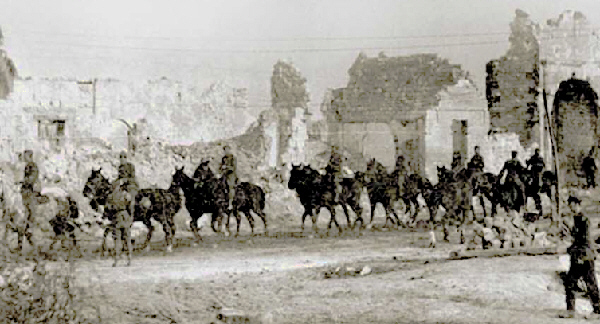
2nd Cavalry Moving to the Front, St. Mihiel Sector
A[nother] patrol was sent to Jonville and brought back the report that it was fired upon, and from his field glasses the sergeant could distinguish wire entanglements about the town. It was now seven p.m. and our mission having been accomplished the troop was assembled and began its march back to Vigneulles. Everyone was greatly fatigued and the horses were jaded as they had been going at fast gaits all day. However, it was felt that we had successfully accomplished our missions and everyone was in good spirits. On our way back we met our Infantry advancing and digging in for the night to hold the ground.
Great quantities of stores were found by the Infantry and they were rolling barrels of beer down the road and through the streets. The troop was halted and the willing doughboys gave each of our men a sack of German hardtack and three bottles of beer, a very acceptable ration after our long absence from our wagon train. We arrived at Vigneulles at nine p.m. Here we found the rest of the squadron in camp, in a field, and to our joy, saw the rolling kitchens and the wagons ready with a hot supper. The Mess Sergeant of H Troop, Sergeant Rock, by his push and pluck had gotten his wagon train through the jam of traffic and had the rations ready.
Sources: Captain Harmon's Account Appeared in the Cavalry Journal in 1922.
|
|
|
Thanks to each and every one of you who has contributed material for this issue. Until 2014, your editor, Mike Hanlon. |
|
 (Or send it to a friend)
(Or send it to a friend)
|
Design by Shannon Niel
Content © Michael E. Hanlon
|
| |
|












